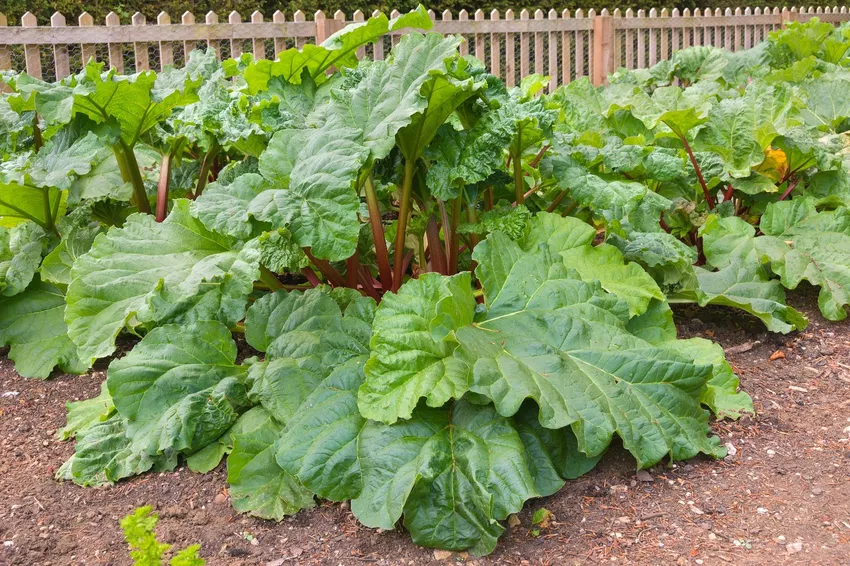Rhubarb is easy to plant in your own garden. Here you can find out everything you need to know about the cultivation and suitable location of rhubarb.

Rhubarb (Rheum rhabarbarum) was eagerly awaited in spring when fresh fruit was not available in supermarkets all winter long. It is the native fruit that ripens first in spring, although botanically it is actually a vegetable. Rhubarb is a perennial plant and can be harvested again every year without much effort. Its strong scents protect it wonderfully from predators, which makes successful cultivation even easier. Since rhubarb is cold and frost-resistant, it is also ideal for cooler gardens. In the following we will give you tips on the ideal location and planting and at the end we will also share the most important care instructions with you.
The ideal location for rhubarb
The rhubarb prefers a sunny and sheltered spot in your garden. The soil should be as permeable as possible with a pH value of 7. If the soil is rather acidic, the rhubarb is happy about liming. The site conditions after harvest are less important to the rhubarb, which is why it also feels very comfortable under fruit trees, which then cast shade on it in summer. Since rhubarb multiplies rapidly and forms a huge rhizome, you should think about enough space for the tree roots when planting under fruit trees. Aside from fruit trees, spinach, lettuce, collards and beans are good planting neighbors for rhubarb.
When and how to plant rhubarb?
As early as autumn, the root pieces (so-called clumps) separated from older plants are planted in well-loosened soil. Plenty of compost should be worked into the soil beforehand. Each mature plant takes up about one square meter of space. If you want to get a new rhubarb plant, there are container plants that are best planted in April or autumn. There are also rhubarb varieties that can be planted out all year round; it is best to check the respective plant description. Is the rhubarb onceplanted, you only have to take care of it a little and nothing stands in the way of your own harvest.

Planting rhubarb in pots
In principle, rhubarb can also be planted in pots. However, you should note that pot culture should only be a temporary solution, as the plant feels most comfortable in the bed. Because of its rapid growth, the rhubarb should be transplanted into a sufficiently large planter as soon as possible after purchase. As mentioned, the plant prefers a permeable soil with a pH value of 7. Fill the pot with some substrate and place the rhubarb plant on it. Now just fill up the pot with soil, press it down well and supply the rhubarb with water directly. Over time, repotting may be necessary, or the plant may be planted directly from the pot into the bed.
Summary of planting rhubarb:
- Rhubarb prefers a sunny, sheltered spot in the garden (suitable neighbors: fruit trees, spinach, lettuce, brassicas, beans); the soil should be well drained with a pH of 7
- Rhubarb multiplies rapidly and should therefore have enough space (about one square meter per plant)
- Either root pieces of older plants are planted or container plants are purchased
- The planting time varies depending on the variety, container goods should be planted in April or autumn
- Rhubarb can also be planted in pots as a temporary solution; you should pay attention to a sufficiently large planter and permeable soil
Transplant rhubarb
After about seven years you can treat your rhubarb plant to a new location enriched with compost. You can find out how best to do this in our special article on propagating rhubarb.
Caring for Rhubarb
In itself, the rhubarb is not particularly care-intensive. Rhubarb loves nutrient-rich soil enriched with compost. It is sometimes difficult to add compost to the mature perennial, so it is important, especially when planting, to enrich the soil with sufficient compost beforehand. A primarily organic organic fertilizer such as our Plantura organic tomato fertilizer can also be worked into the soil. The best time for further fertilization is after the harvest in June or July. You can find out more about the ideal fertilization of rhubarb here.
When watering the rhubarb shouldJust be careful not to keep it too dry. However, it does not tolerate waterlogging very well. Some sources recommend removing the buds, which can also be consumed. However, removing the flowers is not obligatory. Of course, the optical and decorative appeal of the flower speaks for keeping the flowers.
In the end, it is of course also important to harvest your rhubarb correctly. We have compiled what you need to consider and when to harvest best in our special article here.